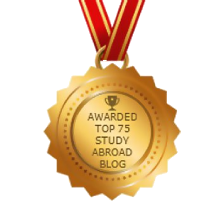Posted on February 11 2021
Going for Australian PR visa - How to and what to do
By , Editor
Updated May 25 2023
Migration to Australia is possible through various types of visas. A large number of migrants arriving in Australia on these visas prefer to become Australian PRs. If you are thinking of immigration Australia is a great destination to choose for so many reasons including a high standard of living, career growth in a range of areas, and educational facilities.
Immigration visa Australia is granted to foreigners who meet the criteria set by the Immigration Authority of Australia. Here, we will attempt to understand the process of Australian PR in some detail.
Australia has 2 main streams of migration that choose immigrants based on merit. They are Skilled Migration and Business Migration. When it comes to immigration nor based on points, there are the following options:
- Family Migration
- Employer nominated scheme
- Distinguished Talent
- Humanitarian Streams
- Regional Skilled Migration Scheme (RSMS)
To be eligible to apply for Australian PR, it’s compulsory to follow the point-based system. The visa types under the Skilled Migration that follow the point-based system include Subclass 489, 190, and 189. In the Business Migration category, only streams in Subclass 188 are points-tested. In both cases, the minimum score requirement is 65 points.
The points calculation is different for each visa and subclass. The higher the points are, the stronger would be your case for PR application.
How points are calculated for Subclass 489, 190, and 189
Points are awarded to candidates on the following bases:
Skills – The skillset required for the Australian PR visa application is periodically updated by Australia’s Immigration & Border Protection Department.
Age – To be eligible for an Australian PR, you must be aged under 45 years
Proficiency in the English language – You must have a sufficient score in English language tests to prove your ability to use the language competently. Skills like reading, writing, listening, and speaking are assessed in these tests. You may take up any of the following tests:
- IELTS – Minimum points required is 6 in all skill areas of English
- TOEFL iBT – Minimum points required is 12 for listening, 13 for reading, 21 for writing, and 18 for speaking
- PTE Academic – Minimum points required is 50
- CAE – Minimum points required is 169
Academic qualification – Your academic degree accredited in Australia or overseas.
Profession – Points for your professional experience is counted based on recognized experience in a particular occupation. You must nominate an occupation from any of the lists namely ROL, STSOL, or MLTSSL.
Now, let’s look at the various visas under the broad categories that we have already mentioned.
Skilled Migration Visas
Visas points-tested
- State-Sponsored Migrations (subclass 190)
- Skilled Independent Migration: subclass 189
- Skilled Regional Provisional: subclass 489
- Designated Area State-Sponsored
- Designated Area Relative-Sponsored
Visas not points-tested
- Employer nominated (subclass 186)
- Regional Sponsored (subclass 187)
- Distinguished Talent: subclass 124
- Skilled Regional visa: subclass 887
Business Migration Visas
Visas points-tested
- Business Innovation & Investment (Provisional) visa (subclass 188)
- Business Innovation Stream
- Investor Stream
Visas not points-tested
- Business Innovation & Investment (Provisional) visa (subclass 188)
- Business Innovation Stream
- Premium Investor Stream
- Entrepreneur Stream
Family Migration Visas
- Parent visas
- Orphan Relative visa
- Aged Dependent Relative visa
- Remaining Relative visa
- Partner visa
- Child visa
- Carer Visa
- Adoption visa
Humanitarian & Refugee Visas
- The woman at risk visa: subclass 204
- Global Special Humanitarian visa: subclass 202
- Emergency Rescue visa: subclass 203
- Refugee visa: subclass 200
- In-country Special Humanitarian visa: subclass 201
Now, let’s look at the pre-requisites for lodging an Australian PR application. The following are the pre-requisites for Skilled Migration Visas that are points-tested.
- Documents needed
- Academic qualification certifications
- Travel documents
- Employment documents
- English language proficiency test (IELTS) score
- Skill assessment document
- Category of migration that’s applicable and there for you to select as per what’s most suitable for you
- The nomination of skills from the SOL provided by Australia’s Immigration & Border Protection Department
- Expression of Interest to live and work in Australia be expressed via SkillSelect. After review of your EOI, either you will get a nomination from an Australian employer, an Australian state, or the Government of Australia. You will be invited to file your PR visa application if you are selected.
- Health check-up to get medical certificates that prove that you are sufficiently healthy and medically fit
- Character verification
- National security check
Once the application for Australian PR is filed, the processing time of the same is decided by factors like:
- Submission of all necessary documents along with the application form completed
- The time you take to respond to queries for additional information from the immigration office
- The time that’s taken for verification of the details you have provided
- Verification with external institutions as regards your health, character, and national security considerations
- The time that’s taken for the audit of work references
If you found this blog engaging, you may also like…
The best careers to go for in Germany in 2021
Note:
PR – Permanent Resident
EOI – Expression of Interest
Tags:
Australia PR
Share

